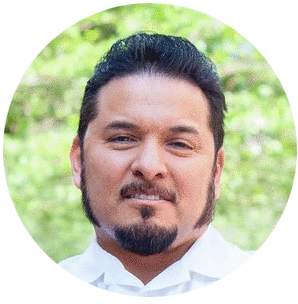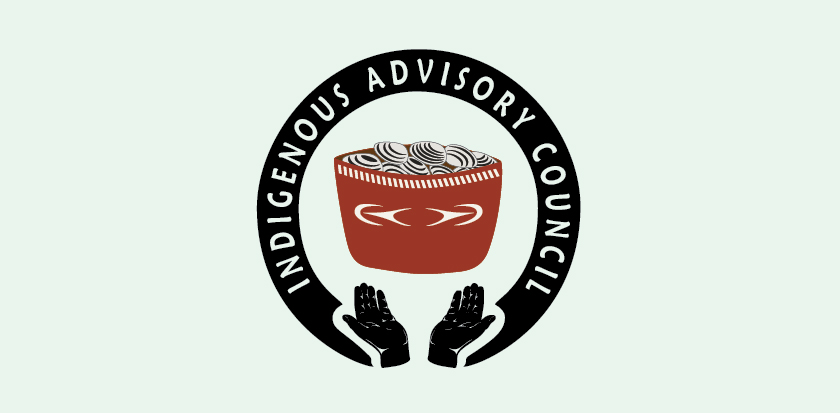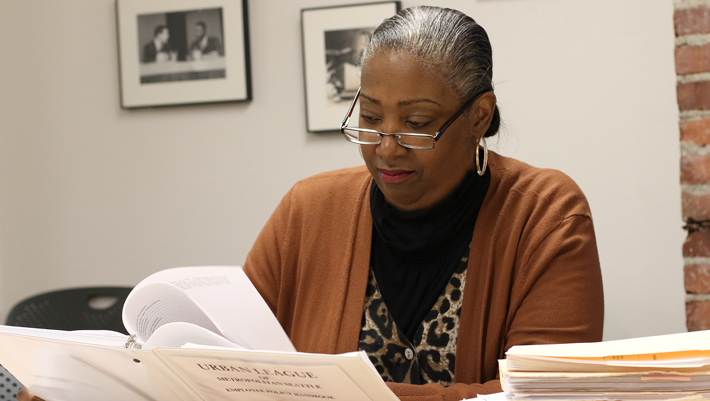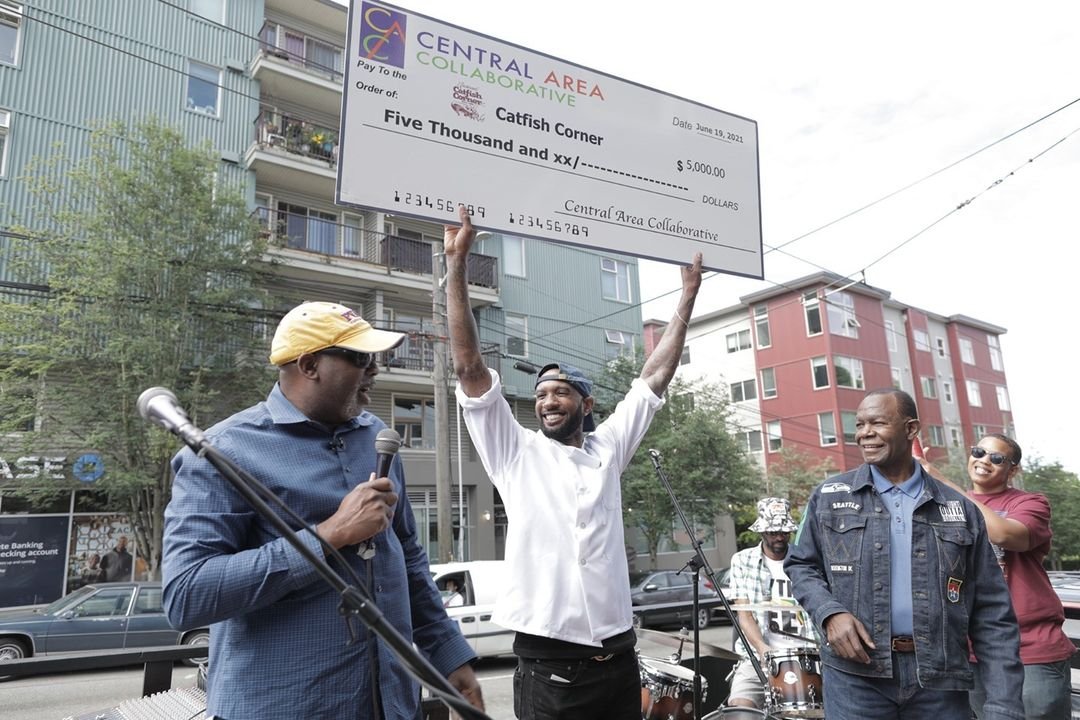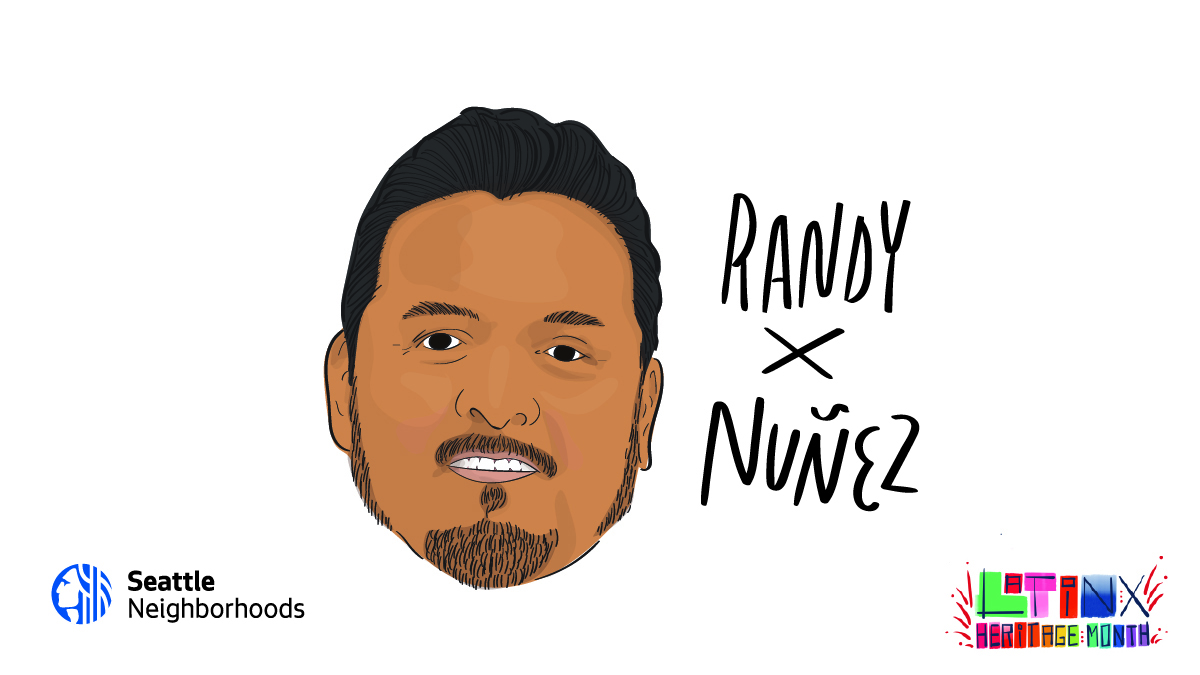
In celebration of Latinx Heritage Month, we have invited founders of Nepantla Cultural Arts Gallery Jake Prendez and Judy Avitia-Gonzalez to curate a series of profiles and stories to amplify and honor people, businesses, organizations, and projects connected to Seattle’s Latinx community.
“I did enough.”
by Dr. Randy X Nuñez
It’s taken me nearly forty years to realize and accept that I did enough. For years I felt guilty I didn’t do more. I just couldn’t get my body to do more, being both frozen and explosive at the same time. After that traumatizing moment, I spent nearly a lifetime conditioning my mind and body to never freeze again.
As a kid, I was oblivious to my mother’s relationships with other men. In part, because I felt no emotional attachment to them, and her attention was drawn elsewhere during my mischievous behavior, I was just a happy kid playing outside all day. All that changed when my mom’s ex-boyfriend broke into our home and violently attacked her.
My mom, little brother, and I arrived home from an evening out, he met us at the door, and my mom began to argue with him, refusing to let him in. He managed to force his way in, and it was then I realized his knife had overcome my Mom’s resistance at the door. Once the door burst open, he shoved her behind the couch, and all I could think of was his knife when he was on top of her. My head screaming, my body ran to the kitchen, grabbed a kitchen knife, ran back, and stood in the living room, body fully charged, but I couldn’t take another step. I tried telling my body to do something with that knife, but I couldn’t. I got his attention, an 8-year old boy trembling with a knife the length of my forearm, he got up and left our home. This would happen again weeks later, almost exactly the same response was all my body could muster, but he had a gun the second time. I shamed myself for not doing more the first time…and the second time.
Being in a street gang as a teenager provided a lot of the protections a kid looked for in my circumstances; shelter from racist teachers and police, camaraderie with others of similar experiences, and agency to do something about transgressors. My homies offered to stomp out the man who attacked my mom after I shared the story late one night. I am glad it never happened, but I fantasized my revenge onto him for years.
Walking into a drugstore late night with my new wife to pick up a prescription, there was a couple of rowdy young men walking in. Their volume seemed to intentionally draw attention to themselves, I noticed the clerk with a helpless look. The environment was familiar to me, and my body knew what to do. One of the guys was walking in my direction down an aisle as I was holding my wife’s hand. Just as he was about to pass, I shoulder checked him. He took a step back, apologized, continued to walk in the opposite direction, and his volume receded.
When we returned to our car, my wife asked, “Why did you do that?” I tried to explain, but explaining to someone that if I didn’t “check him, we could have been targeted” doesn’t sound rational for someone who has been mostly free of violence. This is how my body responds to perceived threats, having hyper vigilance. After the drugstore incident, I thought to myself, my reaction may have served a purpose in my context growing up, as a survival mechanism, but it wasn’t necessary as an adult, and as a married man with children, I needed to change.
As a mental health therapist, my wife encouraged me to seek therapy, especially after the stories I’ve shared with her about growing up and how it might be showing up in our relationship. While I agreed with her, there wasn’t a clear entry point for me into therapy. Cold calling a therapist sounded like a nightmarish blind date, and to have to provide cultural context to a therapist I assumed would be white sounded exhausting and was enough of a deterrent for me to drag my feet.
I arrived at Jolon, California, a seemingly abandoned village south of San Jose, to a Spanish colonial mission built in 1771. I thought to myself, why would a training on facilitating a men’s talking circle be in such an isolated place? The first evening began with a large room of about 50 Chicanos, in chairs in a circle, with an altar in the middle. The altar included photos of loved ones people had brought, family mementos, and popoxcomitl of burning copal. Then it began, one by one, each person sharing what brought them there. This was not the typical brief introduction of titles, but rather who they were as human beings. The men came from all walks of life; some as educators, attorneys, laborers, men with families, gay men, men who just got out of prison, elders, and youth. We spent nearly six hours introducing our authentic selves, burning the midnight copal. I thought I came here to learn how to serve kids who grew up with trauma, little did I know I was here for myself.
The Círculo, as it’s commonly referred to, is a men’s talking circle of mostly Chicanos, centering our indigeneity, ancestral knowledge, and ways of being. While the first day was an introduction, we would spend the entire weekend with the same format, sitting in a circle, one-by-one, sharing, without time constraints nor judgement. Each round had its own theme, the second about the baggage we hope to leave behind, the third about the gifts we have in life, and the final round offering our thanks. Each round as long and deep as the next, peeling layers of self and applying lessons of others. A common phrase heard in Círculo is, “la cultura cura”, the culture is medicine, and grounding the space in our indigeneity was powerful, the scent of the copal and the vibrations of the drum were familiar to me. To be in community with other Chicanos was an opportunity to have a collective response to related traumas. An elder shared, “Círculo may feel therapeutic, it is not therapy, but it might be path into therapy.” A year later, I was in therapy.
I found my therapist. Being Mexican and having provided mental health therapy to military veterans and Chicanos who experienced violent street life gave him an insight into my experiences with violence with a cultural context. When I was told I’m likely experiencing post-traumatic stress disorder, it was hard to believe, but the characteristics were there. I was lucky enough that my symptoms didn’t lead into more explicit unhealthy behavior. I was doing this for my wife, for my kids.
We met weekly, spent most of that first year talking about the episode of 8-year old me with the kitchen knife frozen, talked about it for hours, from every vantage point, including Eye Movement Desensitization and Reprocessing, until one session, I felt the charge leave my body. Then it dawned on me that I did enough in that moment. Had I done more, such as made a move on my mom’s abuser, it would have turned out worse, likely for me and my mom. Had I done less, it would have likely turned out worse for my mom. I did just enough, I could forgive myself. When I attended the following Círculo retreat in Jolon, during round two, I left behind my baggage, I left behind that guilt.
